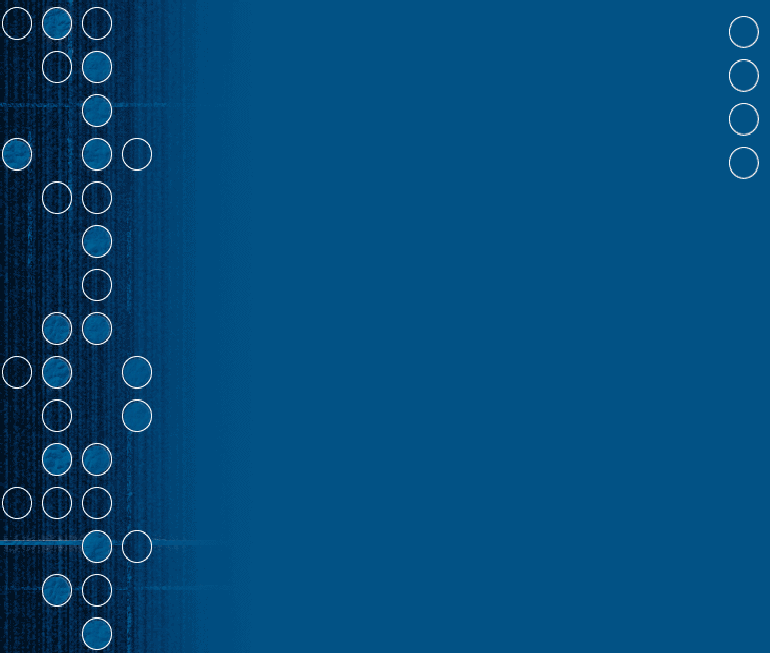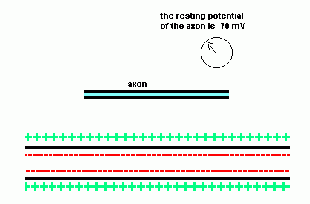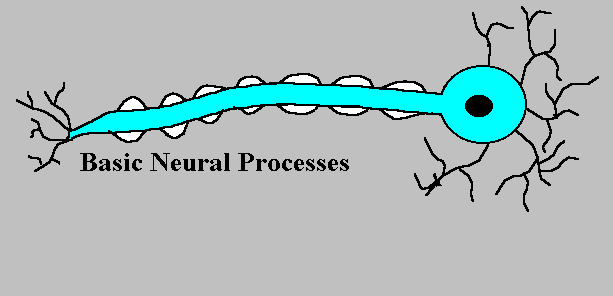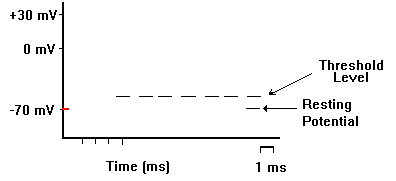Homepage
Bibliography/Links
NEXT
Future Technology
All muscular functions are triggered by a small electric current sent to the muscles through the nerves. To understand how this works we have to get to the cellular level. Nerve cells are called neurons and they transmit signals through axons. Neurons can transmit signals because there is electric potential across the cell membrane. The difference in the ions in and out of the Neuron is the resting potential.
This potential is due to the unequal distribution of Potassium (K) and Sodium (Na) ions. The Na are built up on the outside. When the nerve cell is stimulated it allows more Na ions in. This causes a rapid increase in voltage called an impulse. This impulse is carried along a string of neurons like a mini-circuit. These potentials move down the nerve. If a strong enough potential is sent the transmission is received by receptors in the muscle and wala! movement.
The physics of nerves
neurons are located in a cells body http://www.cidpusa.org/physiology.htm
unequal distribution of ions along cell membrane causes potential http://www.cidpusa.org/physiology.htm
A voltmeter measures the difference in ions in Neurons vs. out.
http://www.cidpusa.org/physiology.htm
An action potential causes an Impulse
http://www.cidpusa.org/physiology.htm
The impulse moves down the nerve
http://www.cidpusa.org/physiology.htm







